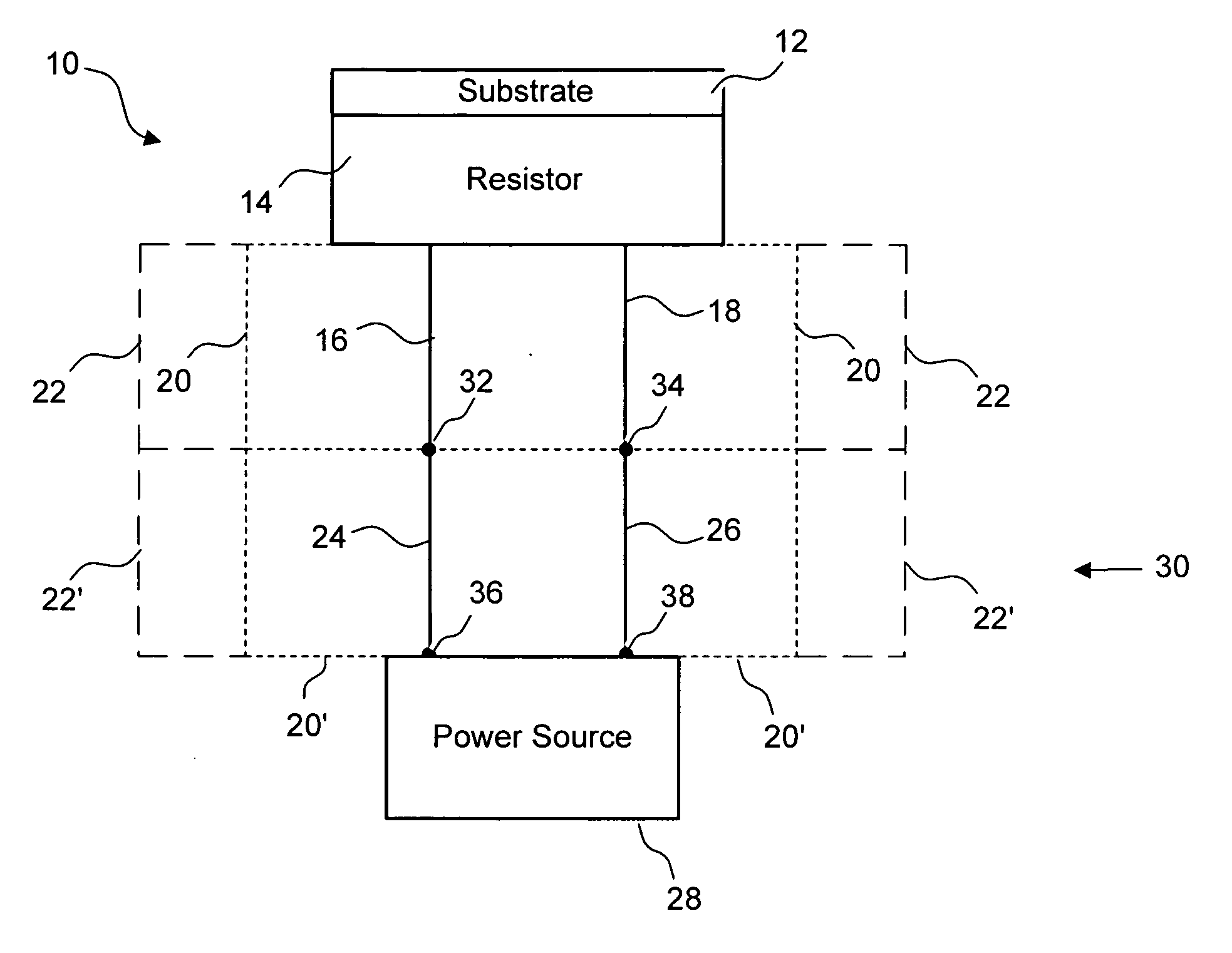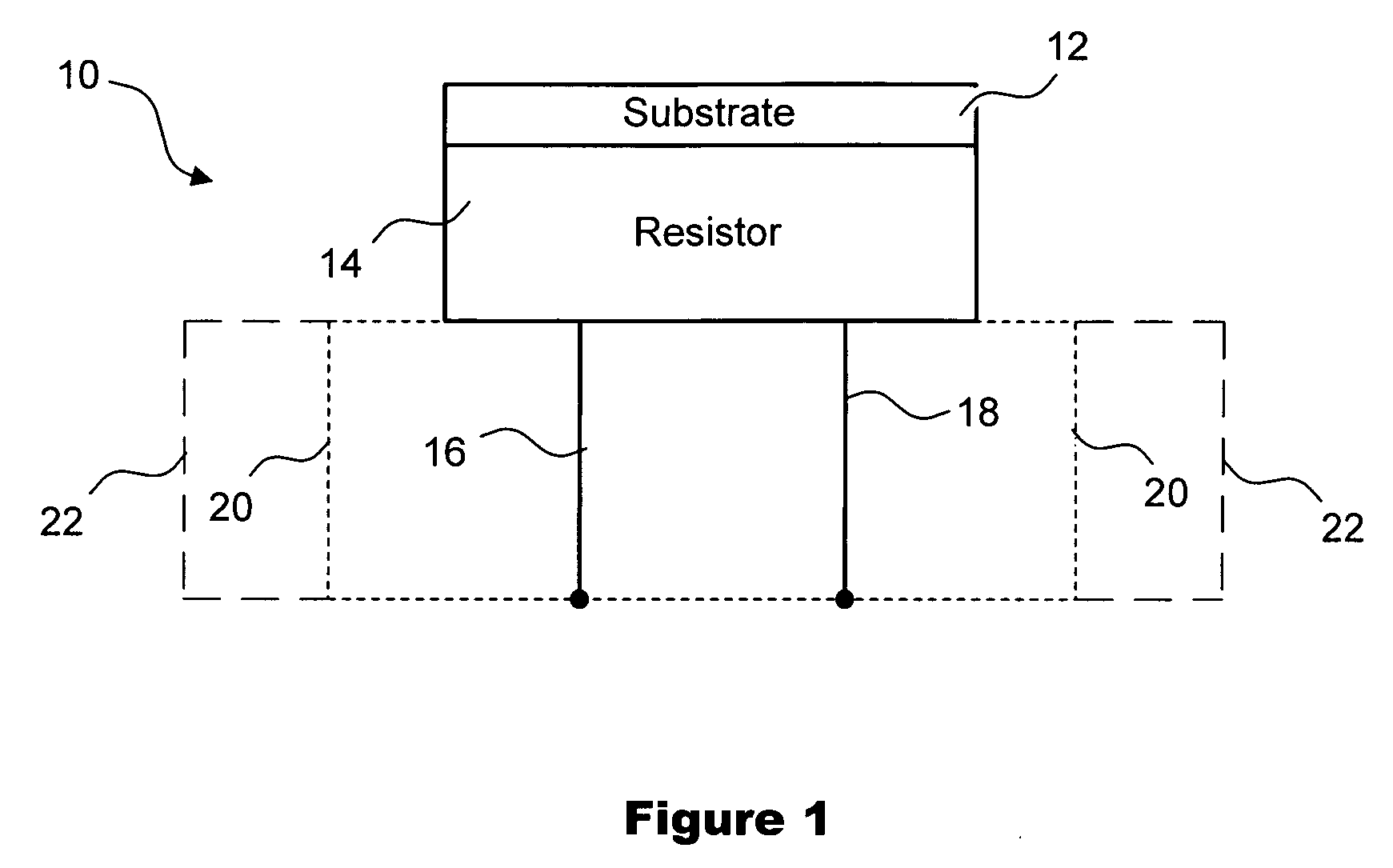Extended temperature range heater
- Summary
- Abstract
- Description
- Claims
- Application Information
AI Technical Summary
Benefits of technology
Problems solved by technology
Method used
Image
Examples
Example
DETAILED DESCRIPTION OF THE DRAWINGS
[0028] Referring now to the drawings, wherein like reference numerals designate corresponding structure throughout the views.
[0029]FIG. 1 is a block diagram illustrating one preferred embodiment of the present invention showing heater 10. A substrate 12 is shown in contact with a resistor 14. Also shown are first conductor 16 and second conductor 18, both of which are shown connected to resistor 14.
[0030] Resistor 14 may comprise, for instance, a noble metal such as a platinum group metal, and a metal oxide selected from the group consisting of: yttrium oxide, cerium oxide, zirconium oxide, and combinations of these. It is further contemplated that through a process called dispersion hardening, the metal oxides may be deposited within the grain boundaries and main body of the noble metal. This process produces a resistor 14 formed of a highly stable material capable of withstanding mechanical loads and chemical attacks at elevated temperatures ...
PUM
 Login to View More
Login to View More Abstract
Description
Claims
Application Information
 Login to View More
Login to View More - R&D
- Intellectual Property
- Life Sciences
- Materials
- Tech Scout
- Unparalleled Data Quality
- Higher Quality Content
- 60% Fewer Hallucinations
Browse by: Latest US Patents, China's latest patents, Technical Efficacy Thesaurus, Application Domain, Technology Topic, Popular Technical Reports.
© 2025 PatSnap. All rights reserved.Legal|Privacy policy|Modern Slavery Act Transparency Statement|Sitemap|About US| Contact US: help@patsnap.com



